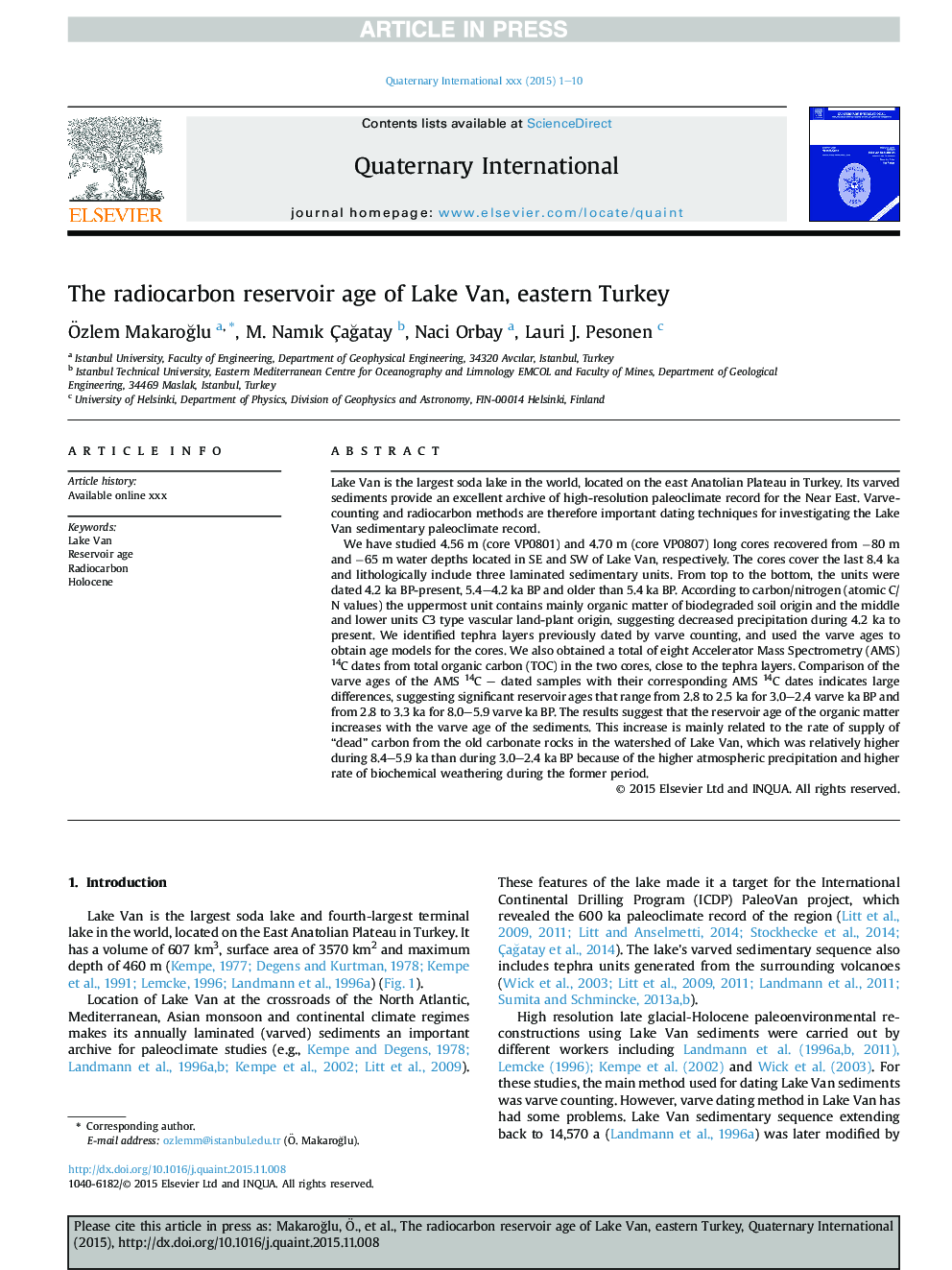| Article ID | Journal | Published Year | Pages | File Type |
|---|---|---|---|---|
| 10500873 | Quaternary International | 2016 | 10 Pages |
Abstract
We have studied 4.56 m (core VP0801) and 4.70 m (core VP0807) long cores recovered from â80 m and â65 m water depths located in SE and SW of Lake Van, respectively. The cores cover the last 8.4 ka and lithologically include three laminated sedimentary units. From top to the bottom, the units were dated 4.2 ka BP-present, 5.4-4.2 ka BP and older than 5.4 ka BP. According to carbon/nitrogen (atomic C/N values) the uppermost unit contains mainly organic matter of biodegraded soil origin and the middle and lower units C3 type vascular land-plant origin, suggesting decreased precipitation during 4.2 ka to present. We identified tephra layers previously dated by varve counting, and used the varve ages to obtain age models for the cores. We also obtained a total of eight Accelerator Mass Spectrometry (AMS) 14C dates from total organic carbon (TOC) in the two cores, close to the tephra layers. Comparison of the varve ages of the AMS 14C - dated samples with their corresponding AMS 14C dates indicates large differences, suggesting significant reservoir ages that range from 2.8 to 2.5 ka for 3.0-2.4 varve ka BP and from 2.8 to 3.3 ka for 8.0-5.9 varve ka BP. The results suggest that the reservoir age of the organic matter increases with the varve age of the sediments. This increase is mainly related to the rate of supply of “dead” carbon from the old carbonate rocks in the watershed of Lake Van, which was relatively higher during 8.4-5.9 ka than during 3.0-2.4 ka BP because of the higher atmospheric precipitation and higher rate of biochemical weathering during the former period.
Related Topics
Physical Sciences and Engineering
Earth and Planetary Sciences
Geology
Authors
Ãzlem MakaroÄlu, M. Namık ÃaÄatay, Naci Orbay, Lauri J. Pesonen,
